Related Research Articles

Bees are winged insects closely related to wasps and ants, known for their roles in pollination and, in the case of the best-known bee species, the western honey bee, for producing honey. Bees are a monophyletic lineage within the superfamily Apoidea. They are currently considered a clade, called Anthophila. There are over 20,000 known species of bees in seven recognized biological families. Some species – including honey bees, bumblebees, and stingless bees – live socially in colonies while most species (>90%) – including mason bees, carpenter bees, leafcutter bees, and sweat bees – are solitary.

In evolutionary biology, punctuated equilibrium is a theory that proposes that once a species appears in the fossil record, the population will become stable, showing little evolutionary change for most of its geological history. This state of little or no morphological change is called stasis. When significant evolutionary change occurs, the theory proposes that it is generally restricted to rare and geologically rapid events of branching speciation called cladogenesis. Cladogenesis is the process by which a species splits into two distinct species, rather than one species gradually transforming into another.
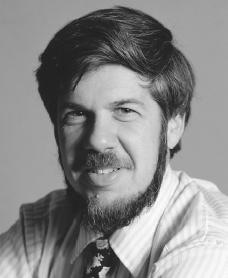
Stephen Jay Gould was an American paleontologist, evolutionary biologist, and historian of science. He was one of the most influential and widely read authors of popular science of his generation. Gould spent most of his career teaching at Harvard University and working at the American Museum of Natural History in New York. In 1996, Gould was hired as the Vincent Astor Visiting Research Professor of Biology at New York University, after which he divided his time teaching between there and Harvard.
Sociobiology is a field of biology that aims to explain social behavior in terms of evolution. It draws from disciplines including psychology, ethology, anthropology, evolution, zoology, archaeology, and population genetics. Within the study of human societies, sociobiology is closely allied to evolutionary anthropology, human behavioral ecology, evolutionary psychology, and sociology.

Nikolaas "Niko" Tinbergen was a Dutch biologist and ornithologist who shared the 1973 Nobel Prize in Physiology or Medicine with Karl von Frisch and Konrad Lorenz for their discoveries concerning the organization and elicitation of individual and social behavior patterns in animals. He is regarded as one of the founders of modern ethology, the study of animal behavior.

Karl Ritter von Frisch, was a German-Austrian ethologist who received the Nobel Prize in Physiology or Medicine in 1973, along with Nikolaas Tinbergen and Konrad Lorenz.

Richard Charles Lewontin was an American evolutionary biologist, mathematician, geneticist, and social commentator. A leader in developing the mathematical basis of population genetics and evolutionary theory, he applied techniques from molecular biology, such as gel electrophoresis, to questions of genetic variation and evolution.

Bee learning and communication includes cognitive and sensory processes in all kinds of bees, that is the insects in the seven families making up the clade Anthophila. Some species have been studied more extensively than others, in particular Apis mellifera, or European honey bee. Color learning has also been studied in bumblebees.

George Christopher Williams was an American evolutionary biologist.
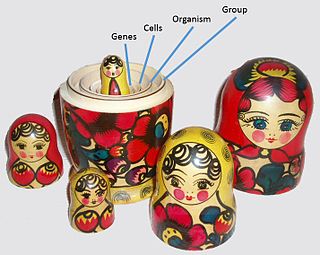
A unit of selection is a biological entity within the hierarchy of biological organization that is subject to natural selection. There is debate among evolutionary biologists about the extent to which evolution has been shaped by selective pressures acting at these different levels.
Warwick Estevam Kerr was a Brazilian agricultural engineer, geneticist, entomologist, professor and scientific leader, notable for his discoveries in the genetics and sex determination of bees. The Africanized bee in the western hemisphere is directly descended from 26 Tanzanian queen bees accidentally released by a replacement bee-keeper in 1957 in Rio Claro, São Paulo in the southeast of Brazil from hives operated by Kerr, who had interbred honey bees from Europe and southern Africa.
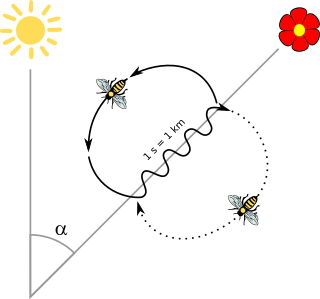
Waggle dance is a term used in beekeeping and ethology for a particular figure-eight dance of the honey bee. By performing this dance, successful foragers can share information about the direction and distance to patches of flowers yielding nectar and pollen, to water sources, or to new nest-site locations with other members of the colony.
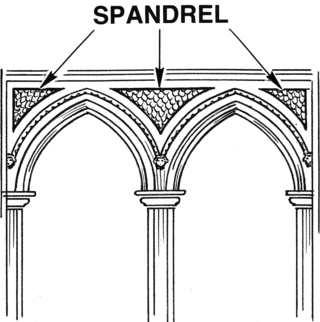
In evolutionary biology, a spandrel is a phenotypic trait that is a byproduct of the evolution of some other characteristic, rather than a direct product of adaptive selection. Stephen Jay Gould and Richard Lewontin brought the term into biology in their 1979 paper "The Spandrels of San Marco and the Panglossian Paradigm: A Critique of the Adaptationist Programme". Adaptationism is a point of view that sees most organismal traits as adaptive products of natural selection. Gould and Lewontin sought to temper what they saw as adaptationist bias by promoting a more structuralist view of evolution.
Many scientists and philosophers of science have described evolution as fact and theory, a phrase which was used as the title of an article by paleontologist Stephen Jay Gould in 1981. He describes fact in science as meaning data, not known with absolute certainty but "confirmed to such a degree that it would be perverse to withhold provisional assent". A scientific theory is a well-substantiated explanation of such facts. The facts of evolution come from observational evidence of current processes, from imperfections in organisms recording historical common descent, and from transitions in the fossil record. Theories of evolution provide a provisional explanation for these facts.
Elisabeth Anne Lloyd is an American philosopher of science specialising in the philosophy of biology. She is currently Distinguished Professor of History and Philosophy of Science and Medicine - as well as Adjunct Professor of biology - at Indiana University, Bloomington, affiliated faculty scholar at the Kinsey Institute and Adjunct Faculty at the Center for the Integrative Study of Animal Behavior.
Charles Otis Whitman was an American zoologist, who was influential to the founding of classical ethology. A dedicated educator who preferred to teach a few research students at a time, he made major contributions in the areas of evolution and embryology of worms, comparative anatomy, heredity, and animal behaviour. He was known as the "Father of Zoology" in Japan.
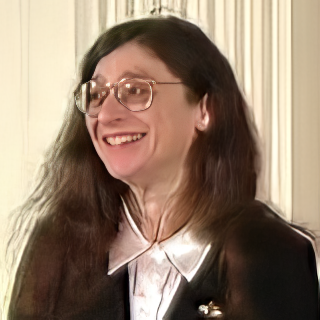
May Roberta Berenbaum is an American entomologist whose research focuses on the chemical interactions between herbivorous insects and their host plants, and the implications of these interactions on the organization of natural communities and the evolution of species. She is particularly interested in nectar, plant phytochemicals, honey and bees, and her research has important implications for beekeeping.

Evolutionary thought, the recognition that species change over time and the perceived understanding of how such processes work, has roots in antiquity—in the ideas of the ancient Greeks, Romans, Chinese, Church Fathers as well as in medieval Islamic science. With the beginnings of modern biological taxonomy in the late 17th century, two opposed ideas influenced Western biological thinking: essentialism, the belief that every species has essential characteristics that are unalterable, a concept which had developed from medieval Aristotelian metaphysics, and that fit well with natural theology; and the development of the new anti-Aristotelian approach to modern science: as the Enlightenment progressed, evolutionary cosmology and the mechanical philosophy spread from the physical sciences to natural history. Naturalists began to focus on the variability of species; the emergence of palaeontology with the concept of extinction further undermined static views of nature. In the early 19th century prior to Darwinism, Jean-Baptiste Lamarck (1744–1829) proposed his theory of the transmutation of species, the first fully formed theory of evolution.

Thomas Dyer Seeley is the Horace White Professor in Biology in the Department of Neurobiology and Behavior at Cornell University. He is the author of several books on honeybee behavior, including Honeybee Democracy (2010) and The Wisdom of the Hive (1995) He was the recipient of the Humboldt Prize in Biology in 2001. He primarily studies swarm intelligence by investigating how bees collectively make decisions.
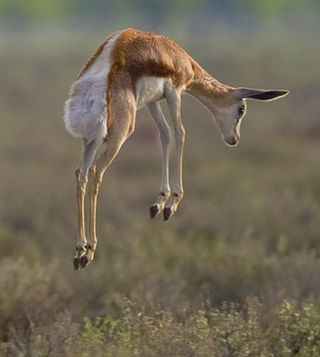
Teleology in biology is the use of the language of goal-directedness in accounts of evolutionary adaptation, which some biologists and philosophers of science find problematic. The term teleonomy has also been proposed. Before Darwin, organisms were seen as existing because God had designed and created them; their features such as eyes were taken by natural theology to have been made to enable them to carry out their functions, such as seeing. Evolutionary biologists often use similar teleological formulations that invoke purpose, but these imply natural selection rather than actual goals, whether conscious or not. Some biologists and religious thinkers held that evolution itself was somehow goal-directed (orthogenesis), and in vitalist versions, driven by a purposeful life force. With evolution working by natural selection acting on inherited variation, the use of teleology in biology has attracted criticism, and attempts have been made to teach students to avoid teleological language.
References
- ↑ "Curriculum Vitae" (PDF). Princeton University.
- ↑ Gould JL (1975). "Honey bee recruitment: the dance-language controversy" (PDF). Science . 189 (4204): 685–693. Bibcode:1975Sci...189..685G. doi:10.1126/science.1154023. PMID 1154023.
- ↑ "The Buzz on James Gould". Archived from the original on 2012-01-07.